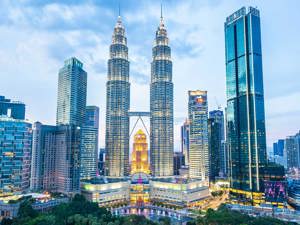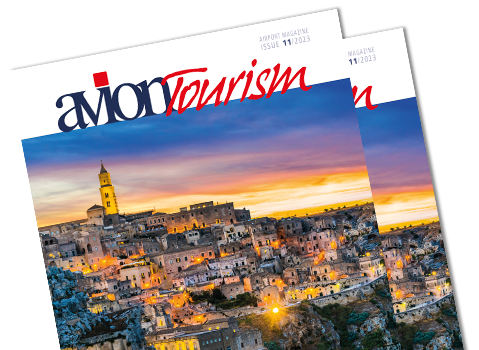Tokyo is a fascinating capital that succeeds in balancing the preservation of the past with an eye toward the future. Symbols of both cultural dimensions coexist in one of the most densely populated urban areas of the world.

Ueno Park with cherry trees in bloom. Copyright © Sisterscom.com, Shutterstock





Photos: Sisterscom.com, Shutterstock
Video: www.japan.travel
Copyright © Sisterscom.com


Surrounded by deep moats that were dug at the time of its construction, this palace was once known as “Edo Castle”, residence of the Shogun. The palace was bombarded during World War II, but was rebuilt in 1968 with the structure in steel.
An elegant two-arched bridge, Nijubashi, leads to the main entrance of the palace. Near the palace there are the Oriental Garden and the Museum of Imperial Collections.
www.sankan.kunaicho.go.jp

The 333-meter-high steel tower is a television antenna, which houses exhibition halls, shops, restaurants and offers wonderful views of the city and Tokyo Bay. Here you can visit an aquarium and a wax museum. It is located in the beautiful Roppongi district, a trendy place with restaurants, bars and nightclubs to experience Tokyo by night. For shopping, you can go to Azabu Juban to live the atmosphere of old Tokyo, or in the modern Roppongi Hills shopping center.
www.tokyotower.co.jp/english

The Meijijingu Sanctuary is located in the middle of a park and is dedicated to the emperor and empress Meiji. The building is an example of Shinto architecture and is a Shinto religious place. A building on the back of the sanctuary displays the Emperor's Treasure.
The sanctuary is located in the Harajuku district with the famous Takeshita-dori street, the Tokyo's teenager area with cafes, restaurants and boutiques for a trendy shopping.
www.meijijingu.or.jp/english


Established in 1872, the Tokyo National Museum is the largest museum in Japan and exhibits more than 100,000 pieces of ancient and medieval art. It is located in the beautiful Ueno Park and is a centre of cultural excellence. Its rich collection offers a comprehensive overview of the traditional art of Japan and other Asian countries. It also hosts historical and scientific exhibitions. After visiting the museum, you can stroll in the Ueno Park or go in the Ueno district.
www.tnm.jp


One of the largest museums in Japan, the Museum of Contemporary Art hosts a complete range of masterpieces of foreign and Japanese contemporary art. It was inaugurated in 1995 and organizes exhibitions of contemporary art for painting, sculpture, fashion, architecture and design. Its collection is about 5,000 works, houses a permanent exhibition and temporary exhibitions.

This district, with its streets flanked by old houses and shops selling traditional items, has a feel of old Tokyo. Here there is the Asakusa Kannon or Senso-ji, the Buddhist temple, dating back to the Edo period. Founded in 7th century, it has five floors and one of its two pagodas is the tallest in Japan. The area in which the temple stands has a magical atmosphere. Cruises on the Sumida-gawa River depart from Asakusa to the Hinode pier, ideal in spring to admire the cherry trees in bloom.

It is the most famous shopping district of Japan, a true shopping temple. Located in one of the oldest areas in Tokyo, Ginza is also an important financial and economic centre with boutiques, art galleries and luxury restaurants. During the Edo period, it was an exclusive place and today hosts the shops of the biggest names in fashion and jewelry (Chanel, Vuitton, Ferragamo, Cartier, Mikimoto, etc.) alternate with department stores (Mitsukoshi, Matsuya, Matsuzakaya, Seibu and Hankyu, Le Printemps, etc.).

Shibuya is situated near the peaceful Meijijingu Sanctuary and to Harajuku and Aoyama, and is a fashion districts, the ideal place for shopping. A very popular area for the young trendy people of the capital, Shibuya is the heart of all innovation in Tokyo: the avant-garde of fashion and international art. Nearby there is also the Yoyogi Park, one of the largest in Tokyo, where to walk among small lakes and large trees, jogging or admire the lovely cherry trees in bloom.


The Ueno district has Tokyo’s largest park, the Ueno Park.
From April, these gardens are transformed into a paradise of blossoming cherry trees, which turn a delicate pink colour.
The park is home to various museums, temples and the first zoo in Japan, Ueno Zoo. From the Ueno Station, the pedestrian streets of Ameyoko-dori are ideal for shopping.




















































